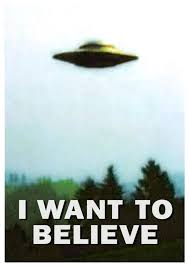Is There a Future For Creative Academic Writing in Academia?
There’s been a lot of talk lately about how and why academics should write for “public audiences.” By this we usually mean that academics turn from the usual professional audience (fellow historians, in my case) and seek to engage non-academics who have an interest in the subject at hand.
This discussion – and all of the assumptions that lie behind it – makes a fairly strong distinction between “public writing” and “academic writing” in terms of:
- Form
- Public writing: op-eds, columns, blog posts, and short articles (800-1,500 words); a range of different structures depending on the purpose/subject of the piece
- Academic writing: longer articles (7,000-8,000 words) and books (200+ pages); argument-driven structure (intro hook—statement of argument—sections proving argument—conclusion)
- Style
- Public writing: no jargon or high theory; few references to other historians; emphasis on story and scene; descriptive prose; quotes but no footnotes/endnotes (perhaps a list of sources or recommended reading)
- Academic writing: theoretical frameworks; overt discussions of historiographical debates (and where the author/work fits into them); extensive quotes and footnotes/endnotes
- Publication venue
- Public writing: online websites, print newspapers and magazines
- Academic writing: academic journals, university press books
So far, the turn to public writing has been conceived as one-directional. Academics go out into the public and therefore write differently. By why are academics so loath to turn back around and write differently for one another?
I’ve been thinking about this for a while, as I’ve started to tackle a book project with an unusual (for academic writing) structure – character-based, chronological – and as I have been writing a shorter piece, a travel story for a popular magazine. Both demand that I step outside my writing comfort zone (which is definitely in the academic tradition) and experiment with storytelling as argumentation.
And then a few weeks ago, I happened upon a series of tweets from participants in the “High Stakes History” conference at Columbia University. During Jill Lepore’s keynote in the afternoon, @MLAconnect the following synopsis of one of Lepore’s points.

The tweet, and my retweet of it with the admonition “stories, not arguments, people” attached, prompted a vigorous Twitter debate about why we believe story and argument to be in tension in academic writing.
We didn’t get too far in this debate – it was Twitter, after all. Historian and Omohundro Institute Director Karin Wulf subsequently wrote a blog post for The Scholarly Kitchen, arguing for the importance of argument in academic writing. “The question,” she wrote, “Ought not be one versus the other. Academic writing is expository.” However, “for academic writing, argument is essential, and narrative is optional. […] pure narrative can never substitute for argument in professional exchange.”
For Wulf, “academic writing” hews closely to the descriptions I have laid out above, in form, structure, and venue. It constitutes a “professional exchange” that requires argument-driven prose, historiographical engagement, and an assertion that what the scholar is writing about – the knowledge the scholar is creating – is new.
This is not unreasonable, nor unexpected. This adherence to “academic writing” style is based on the reality that academics must write for one another, engage in the “professional exchange,” in order to remain academics – to secure jobs and then get tenure. Most tenure committees do not recognize public writing as “scholarship” worthy of inclusion in the hiring or tenure file and so academics must write the articles and books that journals and university presses usually expect to publish.
As long as these are the expectations of academic writers, academic writing will do what it is supposed to do – create new knowledge – but it will continue to be predictable. And only a handful of others besides academics will read it.

So what is there to do? Is there any possibility that journals and presses – and job search and tenure committees – will accept (or even embrace) “creative academic writing”: work that is rigorously researched but that takes risks in terms of prose style, structure, or approach; pieces that make use of multiple points of view, subvert standard chronologies of story-telling and argumentation, or combine genres in new and interesting ways.
It is true that university presses have long published narrative histories, and some books that experiment with structure. Yale University Press, for example, has recently published Aaron Sachs’ Arcadian America, which interweaves cultural history and memoir, and Martha Hodes’ Mourning Lincoln, which separates analytical chapters with short (also analytical) “interludes.”
And some academic journals do give space to shorter pieces of creative academic writing. For example:
- Rethinking History made writerly risk-taking the centerpiece of its project, and has devoted entire issues to pieces that move far outside academia’s comfort zone.
- Journal of the Civil War Era has a “Professional Notes” feature that appears every so often in which a scholar (often a public scholar) takes on current events or popular culture.
- The “Sources and Interpretations” section of the William and Mary Quarterly has been a regular feature of the journal since it shifted its focus from the study of Virginia to a consideration of “the entire field of early American history, institutions, and culture.” These pieces introduce a primary document or focus more specifically on a narrow topic.
- J19 (Journal of Nineteenth-Century Americanists) publishes Pleasure Reading, “brief (3,000-4,000 word) essays about “a text—visual or artifact, literary or critical, old or new, material or virtual—that brought you pleasure and that you believe will bring pleasure to others.”
- American Nineteenth-Century History takes a slightly different approach, publishing articles that connect current events to the events in the past, such as Scott Nelson’s “The First Occupy Chicago Protest” (2011), for example, a piece about the American Railway Union’s strike against the Pullman Palace Car Company near Chicago in 1894 and its similarities to Occupy Wall Street.
These journals are providing excellent opportunities for scholars to experiment with form and style. But with the exception of ANCH‘ and RH‘s articles, these pieces appear in separate sections and sometimes at the end of the journal (although J19 places Pleasure Reading pieces up front). This effectively “silos” creative academic writing, highlighting its differences from academic writing, and reinforcing the dichotomy that the folks involved in the Twitter conversation about “story vs. argument” dream of avoiding.

But still, these developments give me some hope. I want to believe that someday, academic journals and university presses will publish creative academic writing in all different forms, and academics will no longer make the distinction between academic writing and public writing, because the distinction will no longer exist.
This will require, however, a massive shift in the way that academics think about themselves, and the nature of their “professional exchange.” It will require that academics — writers, editors, publishers, administrators — embrace new forms of scholarship as legitimate. And they should do this. Because this kind of risk-taking is what will produce new ways of thinking about the past.
